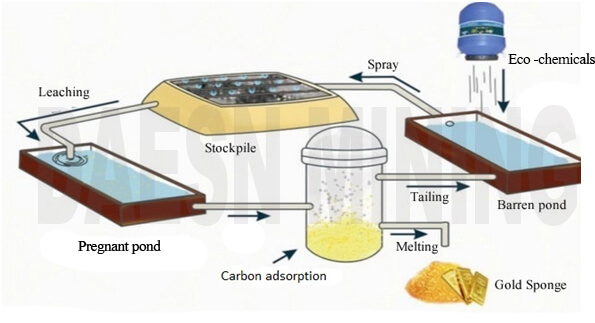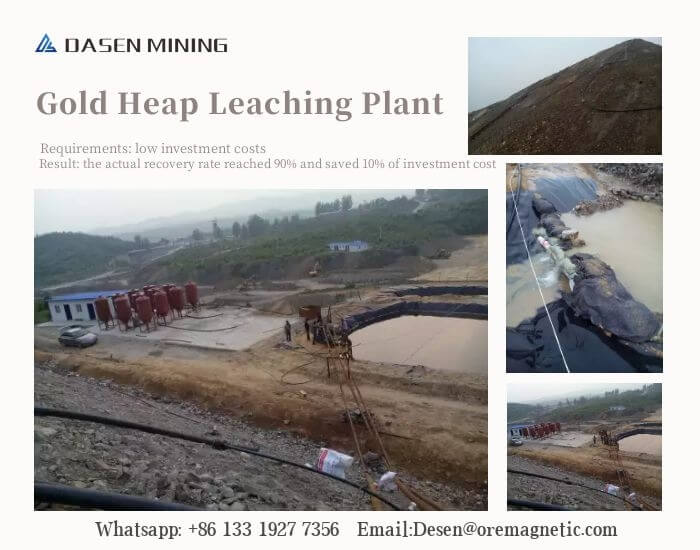How Does Gold Heap Leaching (Cyanide) Work for Low-Grade Ores?
The gold ores suitable for the cyanide heap leaching mainly fall into the following three types:
① Disseminated oxidized ore;
② Sulfide ore in which gold does not coexist closely with sulfide minerals;
③ Vein gold deposit or placer gold deposit with small gold particles or large specific surface area of gold particles.
The ore suitable for the gold heap leaching process gold extraction should possess the following characteristics:
① The gold grade is low, mostly in the range of 1.0 ~ 3.0g/t, and only the gold ore grade of individual deposits is greater than 3.0g/t. This low – grade nature makes the gold heap leaching process, especially cyanide heap leaching, an economically viable option as it can still extract gold from ores that might not be profitable to process with other more expensive methods.
② The embedded particle size of gold is fine or flat, which makes it easy to be leached by cyanide in the cyanide heap leaching process within the overall gold heap leaching process. Fine – grained or flat – shaped gold particles can have better contact with the cyanide leaching agent, facilitating the dissolution of gold.
③ The ore is loose, porous, and permeable due to oxidation and weathering. These physical properties are beneficial for the cyanide solution to penetrate the ore heap in the cyanide heap leaching process, ensuring that the leaching agent can reach the gold – bearing minerals effectively during the gold heap leaching process.
④ For the ore with few pores, the gold can be exposed by crushing method. This preparation step is crucial before the cyanide heap leaching within the gold heap leaching process, as it enables better access of the cyanide leaching agent to the gold.
⑤ The ore contains no or less acidic substances and no or less elements that can react with cyanide. This is essential because acidic substances or reactive elements can consume the cyanide leaching agent, reducing the efficiency of the cyanide heap leaching process in the gold heap leaching process.
⑥ The ore does not contain substances that adsorb or precipitate dissolved gold. If such substances are present, they can hinder the extraction of gold during the cyanide heap leaching process within the gold heap leaching process, reducing the overall gold recovery rate.
Whatsapp:+86 133 1927 7356
Email:[email protected]


